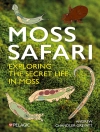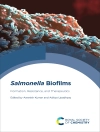This book answers the question “What is it that viruses do?” by presenting three aspects of viral ecology.
The first aspect explains how viruses affect the population diversity and energetics of their host communities. Perhaps the most notable example of this concept is our understanding that primary production within ecosystems often depends upon those viruses which serve as controllers of nutrient recycling, connecting the aquatic and terrestrial realms in ways that can be assessed locally and globally.
The second aspect describes genetic partnerships which exist between hosts and their viruses. These include processes termed endogeny and lysogeny by which the host carries at least a partial genomic copy of the virus. Fluidity of these collective genomes is expressed on an evolutionary time scale and the mutual life cycles which they produce represent a forging of shared genomic fate that obligates partnership of the virus and its host. The viral sequences represent a source of potential benefit as well as potential peril for the host and can implement phenotypic changes in the host. Hosts often use those changes as tools. As humans, the most notable example would be that mammals rely upon temporary activation of their endogenous viral genes in order to successfully develop a placenta.
The third aspect is defending the health of a host, which relies upon activity in two directions. Hosts often use their captured viral genes to identify and subsequently direct battle against invading viruses. This natural concept has been engineered for combating cancer, is useful for suppressing the detrimental consequences of genetic diseases, and has been developed to create targeted antiviral vaccines. But, the defense has to work in two directions and the host can use other symbiotic microorganisms as protection against its viruses.
This book will appeal to a wide readership by providing a broad perspective ofviral ecology, and all scientists will find it helpful for gaining a view of fields beyond their specialization.
Tabela de Conteúdo
PART I. Viral Control of Community Energetics .- Chapter 1. Viral Nature of the Aquatic Ecosystems.- Chapter 2. Life Continues as Viruses Close Land, Water and Atmosphere Nutrient Cycle.- PART II. Understanding the Genetic Partnership Between a Host and Its Viruses. – Chapter 3. Cataloging the Presence of Endogenous Viruses.- Chapter 4. Do the Biological Roles of Endogenous and Lysogenous Viruses Represent Faustian Bargains?.- Chapter 5. Einstein’s Capsid: Bacteriophages Solve the Problems of Space and Time for Bacteria with Emergency Dead to Alive Horizontal Gene Transfer (EDA-HGT).- Chapter 6. Diverse Phage-Encoded Toxins and Their Role in Bacterial Ecology.- Chapter 7. Mycoviruses as Antivirulence Elements of Fungal Pathogens.- PART III. Defending the Health of Its Hosts.- Chapter 8. The Contribution of Viruses to Immune Systems.- Chapter 9. Application of Viruses for Gene Therapy and Vaccine Development.- Chapter 10. Eukaryotic Virus Interactions with Bacteria: Implications for Pathogenesis and Control.
Sobre o autor
Christon J. Hurst
Cincinnati, Ohio, USA
and
Universidad del Valle, Santiago de Cali, Valle, Colombiae-mail: [email protected]












